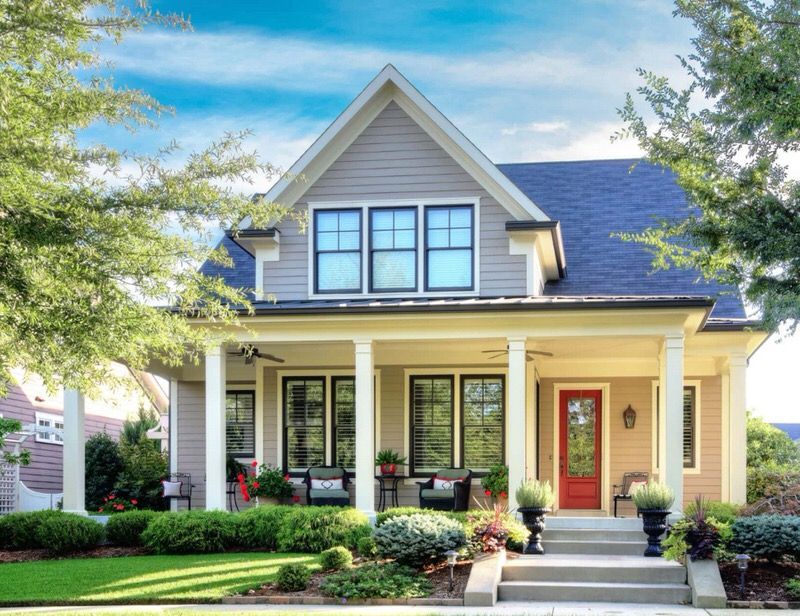Homebuyers’ Down Payments Are Shrinking for the First Time in Almost Two Years as Housing Market Cools Written by Redfin
FHA and VA loans are becoming more common: Just over 15% of mortgaged homebuyers use an FHA loan, and just over 7% use a VA loan, up from last year
The typical U.S. homebuyer’s down payment is $62,468, down by roughly 1% year over year, the first annual decline in nearly two years. That’s according to a new report from Redfin (redfin.com), the technology-powered real estate brokerage.
Redfin’s report is based on its analysis of county records across 40 of the most populous U.S. metropolitan areas. April 2025 is the most recent month for which data is available.
In percentage terms, the typical U.S. homebuyer puts down 15% of the purchase price, essentially unchanged from 15.1% a year earlier.
The median U.S. down payment has been around 15% for the last four years, dipping into the 10% range in early 2023. Before the pandemic, the typical down payment was around 10%.
The last time dollar-amount down payments fell year over year was in the summer of 2023, when home-sale prices were also falling. At that time, the decline in home prices was the primary reason down payments were falling: when prices are lower, the percentage of buyers who put down a larger amount is lower. Now, home prices are rising; they increased 1.4% year over year in April. But home-price growth is slowing: for comparison, prices were up roughly 4% at this time in 2024. Slowing price growth is one contributor to lower down payments.
Down payments are falling in dollar terms, even though overall home prices are rising slightly, because not all homebuyers make a down payment; nearly one-third of buyers pay in cash. The people likely buying homes with a mortgage bought cheaper homes, resulting in reduced down payments. That also explains why down payments stayed flat in percentage terms but declined in dollar terms.
Additionally, a slightly higher share of homebuyers are using FHA and VA loans, which require lower down payments. That can reduce down-payment dollar amounts.
Mortgaged homebuyers are likely purchasing cheaper homes due to affordability challenges: mortgage rates are near 7%, more than double the pandemic-era lows, meaning people are susceptible to costs. Additionally, there is an air of economic uncertainty in the U.S.; some house hunters taking out a mortgage may be seeking cheaper homes so they have more money in their bank account for security.
The overall housing market has cooled, with home sellers outnumbering buyers and the market shifting in buyers’ favor. Sellers in much of the country are willing to negotiate with buyers and give concessions. Some may also be willing to accept lower down payments—which may signal less financial security and a higher chance of the deal falling through—to offload their home.
“The buyers who are moving forward today are being very careful with their finances because, with housing costs near record highs, they’re typically spending a big portion of their paycheck to buy a home. I’m seeing an uptick in first-time buyers looking for starter homes,” said Fernanda Kriese, a Redfin Premier agent in Las Vegas. “Combine that with concerns about layoffs and a potential recession, and people are doing things like cross-comparing mortgage origination fees, shopping around for lenders, and looking into down-payment assistance.”
FHA and VA Loans Are More Common Than Last Year
Roughly one of every seven (15.3%) mortgaged sales used an FHA loan in April, up from 14.2% a year earlier.
The share of mortgaged home sales using a VA loan was 7.2%. That’s the highest April level since 2020, and up from 6.4% a year earlier.
More homebuyers are using FHA and VA loans now than a year ago—and more buyers are using VA loans than any spring since 2020—because it’s a buyer’s market in much of the country. That means buyers are more likely to receive an offer using an FHA or VA loan; in an ultra-competitive market, such as in 2021 and early 2022, the market favors buyers with higher down payments and greater ability to prove their financial security.
Conventional loans are the most common type of mortgage, by far. Nearly eight in 10 (77.5%) of home loans were conventional in April.
31% of Home Purchases Are All Cash, Little Changed From a Year Ago
Just under one in three (30.7%) home sales were all cash in April, down slightly from 31.6% a year earlier.
The share of buyers paying in cash peaked at nearly 35% in 2023, coinciding with mortgage rates that reached almost 8% during that time. Buyers were inclined to pay in cash—if they could afford it—in an attempt to avoid high monthly interest payments.
Mortgage rates are now in the high-6% range, slightly pushing down the share of buyers paying in cash.
Metro-Level Highlights
The data below is from April 2025, the most recent month for which data is available, and covers 40 of the most populous U.S. metros.
- Down payments
- Down-payment percentages were highest in three California metros: San Francisco, Anaheim, and San Jose, all places where the typical homebuyer put down 25% of the purchase price.
- They were lowest in Virginia Beach, VA (1.8%), Detroit (5%), and Jacksonville, FL (5.4%).
- They fell in 11 of the metros Redfin analyzed, with the most significant declines in Florida, specifically in Orlando, Jacksonville, and Tampa.
- They rose most in New York, Baltimore, and Riverside, CA.
- All cash
- All-cash home purchases were most prevalent in Cleveland and West Palm Beach, FL, where roughly half of homes were bought in cash. Next came Jacksonville, FL, and Miami, both places where about 40% of homes were bought in cash.
- They were least common in Oakland, CA (18.2%), San Jose (18.3%), and Seattle (18.5%).
- They increased most in Cleveland, Baltimore, and Philadelphia.
- They declined most in Pittsburgh, Portland, OR, and Sacramento.
- FHA loans
- FHA loans were most prevalent in Riverside, CA, where 26.7% of mortgaged home sales used one. Next came Las Vegas (26%) and Tampa, FL (25.9%).
- They were least prevalent in California: San Francisco (0.6%), San Jose (1.6%), and Anaheim (4.8%).
- Their use declined in just five of the metros Redfin analyzed, with the most significant declines in Providence, RI, Newark, NJ, and Milwaukee.
- Their use increased most in Columbus, OH, Tampa, and Las Vegas.
- VA loans
- VA loans were most prevalent in Virginia Beach, VA (41.7%), Jacksonville, FL (18.3%), and Washington, D.C. (16.5%). Those metropolitan areas all have a significant military presence.
- They were least prevalent in San Francisco, San Jose, and New York, where VA loans made up 1% or less of mortgage sales.
- The use of VA loans increased most in Virginia Beach, Denver, and Jacksonville. They declined nowhere.
To view the full report, including charts, additional metro-level data, and full methodology, please visit: https://www.redfin.com/news/down-payment-dollars-falling
Categories
- All Blogs (66)
- #FundayFriday (1)
- 55+ Communities (3)
- Barndominium (2)
- Barndominiums vs Traditioonal Home (1)
- Buyers (35)
- Celebrity Chefs (1)
- Down Payments (2)
- Exterior Projects (4)
- Farm and Ranch (1)
- First-Time Buyers (30)
- First-Time Sellers (13)
- Flipping Homes (6)
- Holiday Cooking (1)
- Holidays (1)
- Home Improvements (22)
- Home Maintenance (8)
- Home Safety (1)
- Homeowners (10)
- Housing Market (36)
- Houston Living (1)
- Interest Rates (8)
- Interior Projects (6)
- Kithens (3)
- Living in Texas (1)
- Local Business (1)
- Money Saving Tips (22)
- Mortgage/Financial (27)
- Moving (2)
- Negotiating (6)
- New Home Builds (3)
- New Home Construction (3)
- Outdoor Projects (8)
- Painting (5)
- Questions for your Realtor (1)
- Recipes (1)
- Remodling (8)
- Renovations (8)
- Sellers (18)
- Senior Living (2)
- Shop Local (1)
- Small Business (1)
- Style of Homes (1)
- Taxes (2)
- Trends (10)
- Veterans (2)
- Weekly Talking Points (1)
Recent Posts












